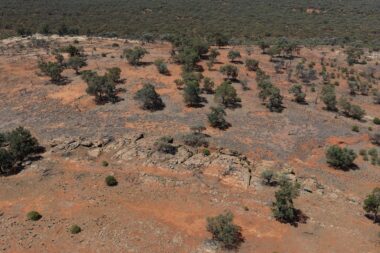Australia’s native noisy miner bird is more of a pest than originally thought, with new research from La Trobe University showing it is preventing forest birds from persisting in residential suburbs.
Research from the La Trobe University Research Centre for Future Landscapes shows forest birds face two distinct, yet interrelated challenges in urban areas: the loss of suitable habitat due to urban development, and the dominance of noisy miners which aggressively exclude small birds.
Study lead, PhD student Jacinta Humphrey, says the conservation of biodiversity in urban environments is a global priority, given the expanding footprint of cities worldwide and the growing percentage of the human population living in such areas.
She says some forest birds have successfully adapted to live in the suburbs, such as the red wattlebird, brown thornbill and pied currawong. However, most species occur sparsely or are absent from residential areas of Melbourne, despite a relatively low human and housing density by world standards.
“Where tree cover is more extensive and predominantly of native eucalypts, forest birds may occur, but these sites typically also represent suitable habitat for the noisy miner,” Ms Humphrey said.
“The dominance of noisy miners and their competitive exclusion of smaller forest birds, means that many forest species are restricted to relatively intact forest remnants within the urban boundary.”
“Effective conservation of forest birds in urban environments requires that both issues are addressed, by retaining, restoring and re-establishing suitable habitat while limiting the impact of noisy miner populations.”
The study, published today in Urban Ecosystems, surveyed forest birds at 300 sites in and around Melbourne, with sites clustered in 30 landscapes representing a variety of housing cover and tree cover.
Composition and richness of forest bird communities differed among land-use types. Sites with greater cover of native canopy trees had a distinct and richer avifauna, however, a pervasive influence on communities was the relative abundance of the noisy miner.
Ms Humphrey says control of noisy miners is challenging in urban spaces. Studies of the effects of lethal culling of noisy miner populations in rural areas showed an increase in woodland and forest birds, but the benefits were short-lived. Gaining public support for such a cull would be difficult, she said.
“Undertaking culling or translocation of noisy miners in urban areas could be beneficial, but would require extensive community education on the detrimental impacts of this species to gain sufficient support and social license to undertake such direct management of a native species,” Ms Humphrey said.
Instead, the researchers propose habitat protection and management at broad and local scales.
At the broad scale, they suggest protecting large, intact forest patches near urban areas, particularly along rivers and creeks such as the Yarra River-Birrarung in Melbourne, and larger reserves with a diversity of native tree species and shrubs. These areas provide limited ‘edge habitat’ for the noisy miner and may help forest birds to recolonise residential suburbs.
In suburban gardens, small habitat patches and along roadsides, they suggest planting shrubs to reduce opportunities for noisy miners to forage on the ground and provide shelter and refuge for smaller birds.
“Increasing the complexity of understorey vegetation helps to limit the availability of open habitats favoured by the noisy miner,” Jacinta said.
“Further attention to understanding the size, status and dynamics of forest bird populations in larger remnants and reserves, and the extent to which they function as population reservoirs, would be beneficial,” the report said.
“Similarly, knowledge of the movements and behaviours of birds that disperse into residential areas is needed, to better understand which features of the urban environment attract them and whether they are likely to persist or simply pass through.”
Contact details:
Jacinta Humphrey
M: 0409 861 553


